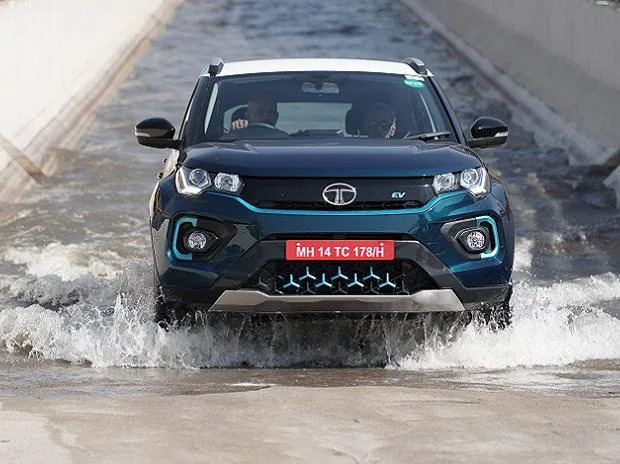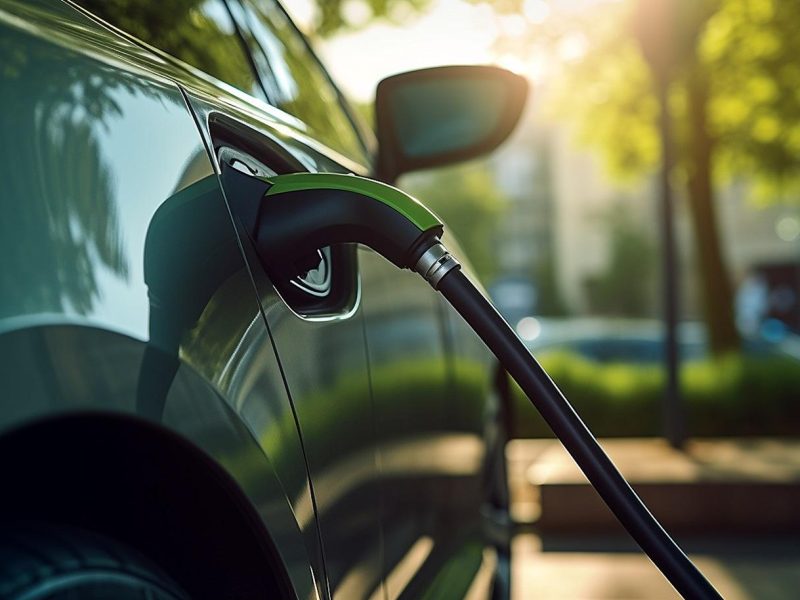While improvements in mileage and battery capacity have been made and are ongoing, issues of high price points and availability of charging infrastructure are also being addressed
The electric car in its current avatar is a different animal altogether, with good mileage and huge battery capacity, and with the electric vehicle (EV) ecosystem developing fast, it is no longer the white elephant it once was.
With rapid strides being made in EV technology, opting for an electric car has become a matter of fashionable choice, especially during Covid times, when people are sensitive about environmental issues and sustainable living.
There was a time when buying an electric car was a costly affair – highly priced, less fuel-efficient, sans air conditioner, and limited local driving. But eco-warriors invested in it to show their faith in sustainable practices. Ashwani Khurana, founder of golf community Karma Lakelands, who bought the Reva some 20 years ago, recalls how it was just launched in India by the Maini family and was good for “running within the city”. To counter rising petrol prices, and traffic snarls, Reva Electric Vehicle was a zero-emission, green mobility option and Maini recounts in his book Reva EV: India’s Green Gift to the World the story of India’s first commercial electric vehicle― the journey from inception, ideation, and designing the car to taking it to the world was one coloured with hope, determination, disappointment, success, and jubilation.
EVs have come a long way since then — evolved and how! Khurana says he is “astonished at the advancements” and is today a proud owner of three electric cars. He is also eagerly awaiting the arrival of Tesla in India.
Covid has been a watershed moment in the history of e-vehicles and has provided the necessary trigger to fast-track their adoption. Shailesh Chandra, President, Passenger Vehicles Business Unit, Tata Motors, says he finds people almost re-evaluating their life choices and lifestyles. “Months of prolonged lockdown have heightened awareness of cleaner skies, smoke-free environments and the joy of silence. We therefore feel that better-educated and well-travelled car buyers are now actively looking at life-positive and earth-positive choices. Post lockdown, with the fleet segment witnessing a downturn, the share of personal segment EVs has now increased to more than 90 per cent. Nexon EV is the highest selling EV in Q1FY21, commanding a 57 per cent share in a market of five electric cars.”
Tata Motors claims to be the market leader in the overall EV segment with 62 per cent market share (Q1FY21). As Chandra says, “We have bestselling products for both fleet segment (Tigor EV, 213-km range) and an aspirational personal segment car Nexon EV (High Voltage-High performance car) with a 312-km range. In addition, the Altroz EV that we had showcased at the Auto Expo 2020, is also under development.”

Announced at Auto Expo 2020, the Mahindra eKUV100 is priced at Rs 8.25 lakh (post FAME subsidy)
Electrifying options
There are quite a few options in the EV segment and more launches are expected in the next two years. The top-five trending choices in electric cars include the Mahindra e-Verito, Tata Tigor EV, Hyundai Kona Electric, MG ZS EV, Tata Nexon EV.
Mahindra e-Verito costs about Rs 9.5-10 lakh (ex-showroom) and comes with a battery capacity of 21.2 kWh, a range of 140 km, a top speed of 86 kmph and charging time is 11-12 hours. In the same segment you have Tata Motors’ Tigor EV at Rs 9.44 onwards with a battery capacity 16.2 kWh, charging time of six hours and top speed of 86 kmph.
In the category above Rs 20 lakh, you have battery at twice the capacity while the charging time is considerably reduced. Take the case of MG ZS EV that is priced at Rs 20.88 lakh onwards, with a big battery capacity of 44.5 kWh, 340 km range, 6-8 hours of battery charging time and top speed of 140 kmph. The Hyundai Kona Electric starts at Rs 23.75 lakh and comes with a battery capacity of 39.2 kWh, a range of 452 km, charging time of six hours and top speed of 167 kmph. Talking about MG ZS EV, Gaurav Gupta, Chief Commercial Officer, MG Motor India says, “We have the highest battery capacity in India. You can easily travel from Delhi to Jaipur or to Chandigarh in one charge. Also, we have a robust network of dealers in many cities and even on the highway, and are committed to developing an EV charging ecosystem along with manufacturing electric cars.”
Tata Motors’ Nexon comes in three variants–XM, XZ+, XZ+ luxury, and is available in a price band of Rs 13.99-15.99 lakh (ex-showroom). It has a battery capacity 30.2 kWh, a 312-km range, eight hours of charging time and top speed of 120 kmph. The incentives by the government and manufacturers is propelling people to buy electric cars. According to Sadhana Sharma, who bought a tectonic blue Nexon two months back, “The Delhi Government has been promoting EVs and has given a subsidy of Rs 1.50 lakh. Road tax has also been waived off now for EVs. Tata Motors does a free home-charging installation and has made the charging port in our society’s parking lot.” She says during monsoons it can easily wade through waterlogged areas as it has a height of 209 mm. The battery is under the chassis, not under the cabin, which makes it safe.
On the upside, electric cars are low on running cost and maintenance. One can budget for Rs 1,000-2,000/month for electricity charges and an annual maintenance of Rs 2,500-4,000 as against diesel charges of Rs 10,000-15,000 per month and maintenance charge of Rs 25,000-40,000 a year.
The flipside
There are two major limitations in buying an electric car.
Charging stations aren’t as easily available as petrol and diesel stations and you have to carry the list of dealers when going out of town. The other issue is the premium one has to pay while buying an electric car. But the good news is that both these issues are being addressed with R&D happening on both counts — prices are becoming more competitive by the day, while battery capacities are increasing and charging time is decreasing. Besides, more charging stations are being set up. Says Atul Arya, Head, Energy Systems Division, Panasonic India: “Prices of EVs are falling with contribution coming from all key components of motor, drive train and batteries and also efficiencies of supply chains. With growing volumes, the situation is likely to improve further. Specific to India, there are policies around subsidies from Central and state governments, which are now equivalent to the cost of batteries, so any disadvantage compared to ICE vehicles is only due to developing efficiencies and scale beyond batteries. With a vibrant start-up ecosystem and interest by established automobile players, it will be a mainstream product in the near future and surpass all expectations.”
Work is on to make the EVs affordable. Mahindra’s aim is to take e-mobility to the masses. The company just announced the launch of India’s most affordable electric car–Mahindra eKUV100–at Auto Expo 2020, at Rs 8.25 lakh (post FAME subsidy). The FAME (Faster Adoption and Manufacturing of (Hybrid) Electric Vehicles) scheme was launched in April 2015 under the National Electric Mobility Mission (NEMM).
Says Mahesh Babu, MD & CEO, Mahindra Electric Mobility Ltd: “With over a decade of experience and clocking over 230 million all-electric kilometres on Indian roads, we at Mahindra Electric have understood the economics of EVs better. The Indian economy is urbanising rapidly. By 2050, over 400 million Indians will move to urban areas according to the World Bank. By 2030, India will have seven mega cities with a population of over seven million. With the strong demand for mobility that will arise due to rapid urbanisation in the future, we believe electric vehicles will play a key role in de-carbonising Indian cities by providing clean mobility solutions. With various EV policies by central and state governments, we will see quicker adoption of electric mobility in various segments starting with electric three-wheelers and shared mobility segments. This will further improve the entire ecosystem that will encourage personal buyers to switch to EVs.”
The lithium ion batteries currently cost a staggering Rs 6-7 lakh and need to be replaced after a few years. While battery prices are expected to fall at dramatic pace to boost demand, it may be fulfilled by industry through newer chemistries over the next few years as R&D, testing and commercialisation is in various stages, says Panasonic India’s Arya but he cautions against short cuts. “Immediate expectation to maintain the price curve may expose us to the serious risk of lower safety standards emanating from cheaper imports from certain geographies. The industry may discover a better method of tackling the price issue through financial models such as battery leasing, BaaS (battery-as-a-service) and other such methods. Infrastructure developers will play a crucial role by developing ubiquitous charging and swapping infrastructure.”
A lot of research is happening on batteries for EVs. Over the next two years the main contender will remain Li-ion chemistry, says Akshay Kashyap, Founder and Managing Director, Greenfuel Energy Solutions. “All cars need longer range and therefore what we will see is a lot of innovation in improving energy density of batteries from 150-200 wh/kg to 400 wh/kg. Further, you will see better life cycles and lower cobalt content to reduce dependencies to geopolitically vulnerable regions.” One can expect high strides and improvement in energy density, cycle life and lower cobalt content in Li-ion batteries as they exist today. Beyond two years, solid state Li-ion and metal air batteries might come into the picture.”
He adds it would be great to see electric cars built from ground up as EVs and not just revamped electric versions of existing ICE models. One unique vehicle being awaited is the three-wheeled two-seater car from Strom Motors.
The next wave of electric mobility belongs to India. It is expected that India will not just become the biggest market but also a global hub for research, development and manufacturing of EVs for the world.
Table: Electric car prices and specifications
| Brand | Price (Rs lakh) | Battery Capacity (kWh) | Range (in Km) | Charging Time (hours) | Top Speed (kmph) |
| Hyundai Kona Electric | 23.75 onwards | 39.2 | 452 | 6 | 167 |
| MG ZS EV | 20.88 onwards | 44.5 | 340 | 6-8 | 140 |
| Tata Nexon EV | 13.99 onwards | 30.2 | 312 | 8 | 120 |
| Mahindra eVerito | 9.46 onwards | 21.2 | 181 | 11-12 | 86 |
| Tata Tigor EV | 9.44 onwards | 16.2 | 142 | 6 | 86 |





Great, thanks for sharing this post.Much thanks again. Awesome.
data analytics courses in ameerpet
data scientist course in hyderabad